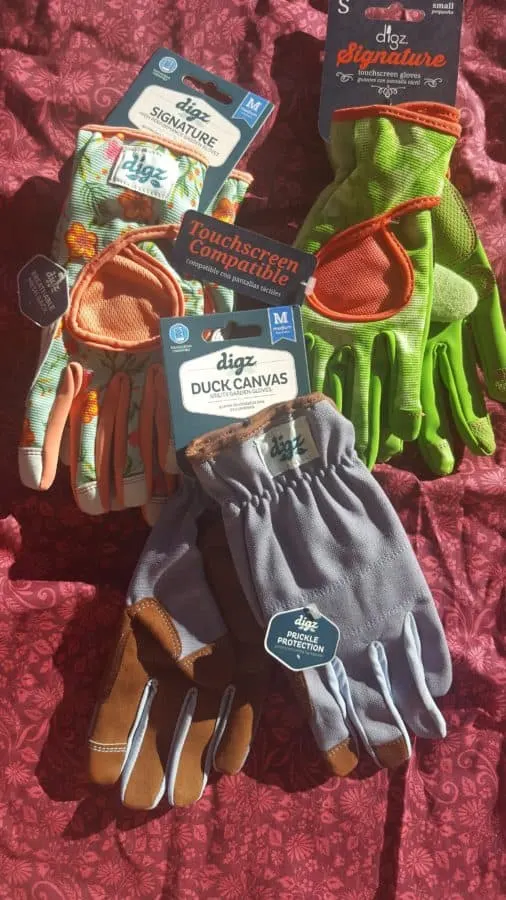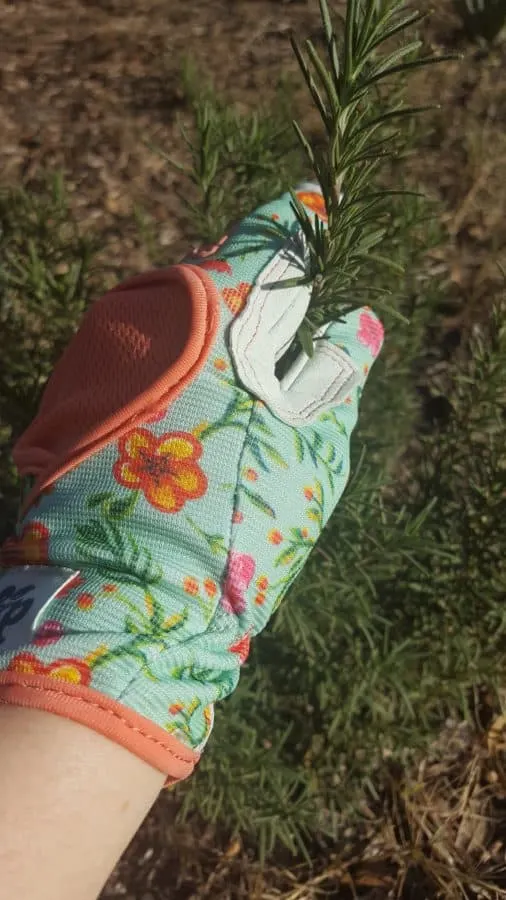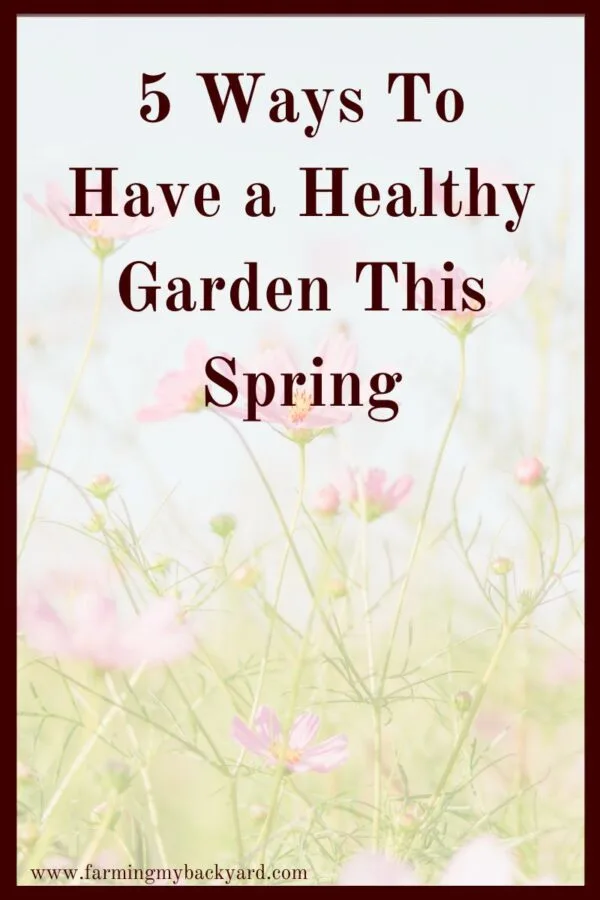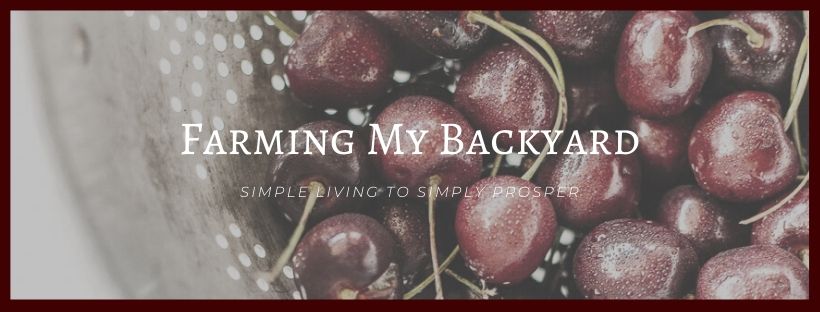If you are anything like me, having a healthy garden is a dream every spring. THIS will be the year the tomatoes don’t have blight! THIS time my lettuce won’t bolt! And whatever happened to those carrot seeds I planted, anyway? If you are not naturally blessed with a green thumb, here are some ways to up your chances of having a healthy garden.

Related Posts:
- How To Grow Food Even When You Have Poor Soil
- Here’s How To Use Rainwater In Your Garden
- Excellent Spring Garden Vegetables For Small Spaces
- Easy Ways To Get Started On a Great Spring Garden
- How To Put Your Garden To Bed In The Fall
- 5 Beautiful Plants For Your Garden That Bees Love
- Compost Makes Every Homestead Better. Want To Try?
- Building Soil Is The Big Secret To Great Gardens
- Planning a Garden is a Simple Way to a Better Harvest
- You Need To Try No Dig Gardening For Great Soil
- Saving Tomato Seeds Is a Great Way To Superior Tomatoes
- Is Fancy Equipment Needed on a Homestead?
- Inexpensive Tools Every Gardener Should Have
How To Have a Healthy Garden
Prepare Your Soil
If you haven’t started planting yet, it’s a great time to prep your garden beds. There are many ways you can set up your garden. Some of the most popular are raised beds and lasagna (or no dig) gardens. Other good opetions are waffle gardens and hugelkultur beds.
You can start new beds any time of year. Frame them in with something, and start adding organic matter. If you can add organic matter in the fall, your beds should be ready by spring, but don’t worry too much about when you start. Just do it!
Another great way to prep a garden is to fence your chickens into the space you want to use. The chickens will scratch and turn the soil, eat the weeds and the weed seeds, all while fertilizing for you!
If you aren’t into building and are interested in a customized garden bed, check out Olle Gardens. Their galvanized steel bottomless garden beds in a variety of shapes, colors, and sizes. They’re designed to last for up to 20 years, resist rust and harsh weather, and of course they’re safe for planting! If you decide they’re right for you, use the discount code KATHRYN for a 10% discount!
Compost
There are tons of ways to compost, but all of them will help your garden be it’s best self. You can just heap up your compost ingredients, or use a bin. Bins are tidier, and super easy to put together. My favorite is three pallets tied together with baling string. Super fast, cheap, and easy to take apart.
You can also compost in place, right were you want to put your garden. This is often considered sheet composting or lasagna gardening. You build up layers of compostable material, smother the weeds, and all the while it improves your soil. If you’re already growing in your garden, a nice mulch in between your plants is a great way to compost in place. I like straw for most vegetables.
Water Consistently
If I have one consistent failure as a gardener, it is watering consistently. Every year I swear THIS time I won’t forget to water. But then I do. If you have this same problem, setting up a system to make watering easier is a great way to have a healthy garden.
You can add rain barrels to collect rain water to save money on water. You can install a drip irrigation system, and even have it all set up on a timer. There are some great ways to make watering easier to do and harder to forget.
Or maybe your’re the kind of person that remembers to water and gets out there every week and does it! If so, go you!
Plan Ahead
Another one of my garden failings is that I have a tendency just to slap plants in the ground and hope for the best. However, if you take the time to plan ahead you will have much better results.
First off, pick varieties of plants to grow that are well suited for your climate. There are many lovely seed catalogs out there. If you can find one that is geared toward growers in your area, you will most likely have better success. You’ll also want to make sure you know what USDA growing zone you are in.
Even better, you can save your own seeds. When you save your own seeds you create vegetable varieties that are ideally situated for your particular micro-climate.
It’s also a good idea to plan out where you will plant each type of crop each year, that way you can plant companion plants nearby and rotate your vegetables each season. You may also want to include pollinator plants to attract beneficial insects.
If you really want to go all out create a map of your garden, including sun and shade and wind patterns!
Don’t Start Too Early
Another common gardening mistake is planting your seeds too early. They won’t grow if it’s too cold when you plant outside. If you don’t know when your last frost date is, find that out, because you will need to know that in order to calculate when to plant your seeds.
You may also want to become familiar with your particular location. It may be that certain areas of your yard are warmer soon than others, or are more likely to frost late. You could also use season extenders, such as cold frames to warm up your soil sooner and get a head start. Depending on where you are, you may even be able to garden year round.
If it’s too cold where you live to start planting a great way to beat the gardening bug is to build cold frames for your beds. Then put them out when they’re done! Another good way to keep busy during the dormant season is to prune and fertilize perennial plants.
You can also take that break time to care for any tools that need cleaned or sharpened. Usually this happens over the holidays, which can be a good time to add new tools you may need, or replace those that are worn out.
This winter, I was sent several pairs of Digz gloves to review, and while I prefer to keep my tools minimal, these gloves were very versatile and handy for the dormant season trimming I’ve been doing while waiting for spring.

They were nice and flexible, and it was super handy to have the touchscreen sensitive fingertips. Plus some of them have mesh back, which is very nice in hot climates like Texas!

If you have a good inventory of what tools and gardening supplies you have and which ones you need to add or replace at the beginning of the season you will be able to ask for them for gifts, or keep an eye open for sales or second hand opportunities. Plus, that will keep you busy while waiting for planting time!
It’s never too late to have a healthy garden! These 5 tips will help you get off a good start, and keep going all year.

Want To Raise Happy Chickens?
Subscribe for our newsletter and get the free email course Intro To Backyard Chickens as well as a free printable checklist to walk you through step by step!
